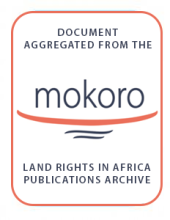Land Library
Welcome to the Land Portal Library. Explore our vast collection of open-access resources (over 74,000) including reports, journal articles, research papers, peer-reviewed publications, legal documents, videos and much more.
/ library resources
Showing items 1 through 9 of 17.The Brazilian Amazon has 49.8 million hectares (Mha) of public forestlands not allocated by the federal or state governments to a specific tenure status: the so called undesignated public forests (UPF).
In recent history, Indonesian forest policies have been dominated by deforestation in the name of economic progress. Many actors have expressed concerns about this trend and have tried to reverse it in favour of a more sustainable pathway.
Brazil has become an agricultural powerhouse, producing roughly 30 % of the world’s soy and 15 % of its beef by 2013 – yet historically much of that growth has come at the expense of its native ecosystems.
Liberia has long maintained a dual land tenure system over statutory and customary lands characterized by unclear terms of ownership. Most rural Liberians depend on common resources for their survival. These are largely communally owned;used and managed.
Brazil’s Soy Moratorium solidified the world’s largest traders’ commitment to stop soybean purchases from production areas deforested after July 2006. The aim was to remove deforestation from the soybean supply-chain and halt one of the main drivers of forest loss in the Amazon biome.
Colombia’s Andean-Amazonian foothills are among the most pressing deforestation hotspots in the country. Yet, the relationships and dependencies of underlying deforestation drivers are not well understood.
Report shows that Dutch-based banks continue to finance deforestation and land grabbing in Liberia. Thousands have lost their homes, local communities have been intimidated or imprisoned, and large swathes of forest have been cleared or burnt down.
After forest governance reforms by the Brazilian government, Amazon deforestation rates dropped by almost 80% between 2004 and 2012. Since then, however, deforestation has slowly increased again, casting doubts on the long-term sustainability of past conservation policy achievements.
Environmental policies and regulations have been instrumental in influencing deforestation rates around the world. Understanding how these policies change stakeholder behaviours is critical for determining policy impact.


